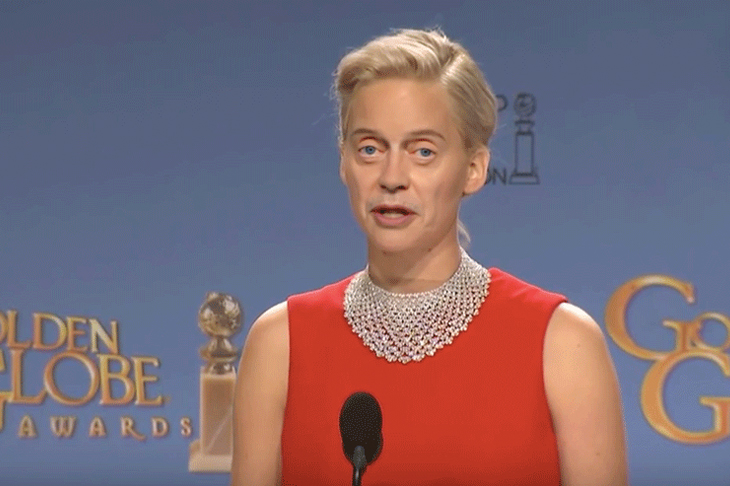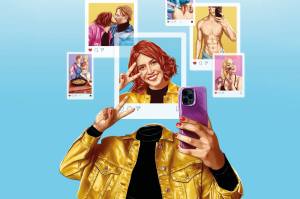Are you scared of deepfakes? Perhaps you should be. A few years old and continually growing more sophisticated, deepfakes are digital simulacra generated through machine learning that are barely distinguishable from the real thing. They’ve been used to fake celebrity porn videos, make Barack Obama seem to call Donald Trump a ‘dipshit,’ and most recently, superimpose Steve Buscemi’s face on to Jennifer Lawrence’s body in a video that was at once mesmerizing and scary (Buscemi/Lawrence bore a strange resemblance to Tilda Swinton).
Many of the implications of deepfake technology are terrifying — imagine, for example, a fake declaration of war — so it’s good to hear that the US military is taking it seriously. Yet there may be a small silver lining. In an internet where literally anything can be faked, deepfakes may be what finally makes us think before we tweet. Because, lately, we haven’t been doing a particularly good job of that. It’s common these days for a news story to be backtracked, corrected, or heavily revised after social media goes wildly wrong. Often, the people responsible aren’t intentionally spreading misinformation; they’re convinced they’re spreading the truth.
Social media — particularly Twitter — has led to the rise of a loose cohort of media figures whose primary focus is the news, and who have amassed large followings. Collectively, and sometimes individually, they’re capable of steering the conversation of news stories and propagating raw, unfiltered reports from across social media. They’re not all journalists; plenty are ex-journalists, activists, pundits, analysts, academics, or even semi-anonymous armchair critics with a knack for current events. Many are vocally partisan, and there’s nothing wrong with that. But in a heated political climate, the news becomes charged with more and more emotion, and there’s a pressure to make your take on the news known as quickly as possible. Sometimes this jumps off of Twitter and into mainstream news. Remember the Covington video? It was only last month. The images were all over Media Twitter and then the media itself before it became clear, thanks to information warfare experts, that the edited portion of the video that originally went viral came from a shadowy source who may have been intending to do nothing more than stoke partisan divides.
When a news event with unequivocal gravity (say, a natural disaster) is unfolding, media outlets don’t hesitate to tweet best practices for assessing what you see on social media. WNYC’s Breaking News Consumer Handbooks come to mind: Be careful of developments that start with ‘We are getting reports.’ Don’t trust anonymous sources. No, there wasn’t a shark swimming down the street. This is stuff that’s taught in any journalism school, but these days, many reporters never took a journalism class and many media influencers aren’t members of the press.
The internet is a realm where anyone can be a creator or distributor of content, and even without deepfakes popping into our Twitter feeds we already may have no idea who that ‘anyone’ who we’re retweeting actually is. As digital increasingly becomes our primary means of accessing information, those of us who are at the vanguard of content dissemination should be questioning the veracity of anything we see. Most of us think we do, but we’re all prone to letting our guard down, especially when media tears at our heartstrings. (I’ve been guilty of this! When my love for the First Amendment overtook my sense of media caution, I tweeted my outrage about late-night TV host Stephen Colbert being investigated by the FCC over a vulgar joke about President Trump. I learned within hours that it was an exaggeration. The FCC reviews every complaint it receives; Colbert did not merit an investigation.)
In short: if there are convincing deepfakes floating around Media Twitter, we’re going to have to keep ourselves in check a little better. Is this entirely a bad thing?
True, there’s something disturbing about being a media professional in a digital world where — far beyond an inaccurate tweet or a Photoshopped shark — literally anything could be fake. So my hope that the rise of deepfakes could usher in a more consistent sense of media fact-checking isn’t entirely born out of optimism. Nor does it diminish the fact that deepfakes are scary. But either way: The social media news cognoscenti is obsessed with being real-time. It may take an urgent need for better scrutiny to convince our itchy Twitter trigger fingers that it’s OK to slow down.


















